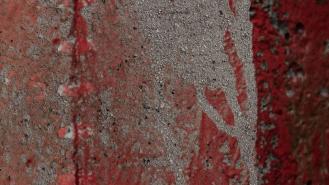
"I probably would have hung the little girl. Like I said, I'm pretty mean or could be. But on the other hand I'm very -- you know, I'm a nice guy.”
Dennis Rader could not reach sexual satisfaction without binding, torturing and killing other human beings. He just didn’t see why another life should stop his perfect ‘moment’.
Dennis L. Rader was born in 1945 in the city of Wichita, Kansas. He was an average pupil, a regular Boy Scout and an active church member. His was an unremarkable childhood though, he later claims that he was dropped on his head as a kid. Brain trauma is commonly cited in serial killer cases such as Fred West and John Gacy. But Rader shows such an awareness of the serial killer mythology that any events or emotions that have no corroboration or source apart from Rader should be considered with care.He says that it’s at school that he first develops unnatural urges. These fantasies are ‘almost like a picture show’ which he wants to direct and produce, no matter what the cost. He begins to strangle local cats and dogs.
But Dennis is adept at separating his inner demons from his public persona. He joins the Air Force for four years and serves abroad during the late 60s.
On his return home to civilian life, he drifts through a series of average jobs. He meets Paula Dietz, a gentle and softly spoken woman who he wins her over with his gentlemanly ways. He always opens the door for her and helps her on with her coat. In 1971, they marry. He starts night school but it will take him six years to graduate with a degree in Administration of Justice. It gives him an insight into being a police officer, his desired profession.
1974 is a big year for Dennis. He makes his fantasies a reality and starts the year by killing four people from the same family. Then Paula announces that they will be starting their own family. With Paula expecting, Dennis starts work at a firm that installs burglar alarms. Perversely, his job teaches him further how to enter another’s home without detection.The following year, his first child, a son, is born, and four years after that, he has a daughter.
In 1989, he loses his job. He’d always thought it inferior work and eventually he becomes a city compliance officer tasked with everything from animal to car control. It’s the closest he’ll come to being a policeman. He soon gains a reputation for the zealous enforcement of even the pettiest regulations. He harasses a neighbour over the height of her grass but complaints to his superiors from both staff and citizens over his inappropriate behaviour and abuses are largely ignored and he’s later promoted to supervisor.
While some find Dennis to be confrontational and arrogant, others consider him accessible and pleasant, explaining his positions of both Boy Scout leader and congregation leader of his local church. Unknown to those who think him a charming character and far beyond the worst suspicions of those who know him to be a bureaucratic bully, Dennis keeps a secret box, ‘the mother load’.
A look inside reveals the true nature of Dennis. There are cut out pictures of child swimsuit models with sexual fantasies written on the back of them. Amongst them are various self shot photographs of him wearing pantyhose and bra in bondage positions. There are also drawings and photographs recording the last moments of his murder victims.
Timeline
9th March 1945 - Born
15th January 1974 - Murders Joseph and Julie Otero, as well as two of their children Junior and Josephine.
4th April 1974 - Murders Kathryn Bright.
17th March 1977 - Murders Shirley Vian.
8th December 1977 - Murders Nancy Fox.
27th April 1985 - Murders Marine Hedge.
16th September - Murders Vicki Wegerle.
19th January 1991 - Murders Dolores Davis.
25th February 2005 - Arrested.
27th June 2005 - Pleads guilty.
18th August 2005 - Sentenced to 10 consecutive life sentences, with a minimum of 175 years.
The Trial
Fittingly for the media savvy Rader, he makes his first court appearance via a video link from his cell on 1st March 2005. He pleads not guilty to the ten murder charges. Rader says that he will represent himself in these actions, much like Ted Bundy had done.
Two of the BTK killer’s victims filed civil lawsuits seeking damages from Rader. Their motive isn’t monetary but is intended to ensure that he can never profit from any media interviews. In June, Rader changes his plea to guilty. Superficially, he appeared unusual amongst serial killer psychopaths in that in pleading guilty and expressing remorse, he showed a degree of empathy and sympathy, which is almost, by definition, missing in such mass murderers.
“I have a lot of remorse. I’m very sorry for them. It is something I wouldn’t want to happen to my family.”
Of course, whatever he says he feels, his cold, clinical, calculating killing of "projects" shows his true character. It’s probable that his apparent remorse is no less of an act than when he dressed as a repair man or told his victim’s stories. All lies intended to achieve the result he wants. And in reality, Rader doesn’t accept responsibility for his crimes. He blames his split personality, a monster in his mind, or a demonic presence forcing his hand.
On 26th July 2005, Rader’s wife of more than thirty years ends the marriage and the judge, understandably, waves the usual waiting period to grant an immediate divorce. She can take some small consolation from the fact that if Rader had not been married, he would have been free to stalk and kill much, much, more.
His sentencing in August was the first time for relatives of his victims to confront him, but it also revealed more gruesome details. Rader threw his last victim’s body under a bridge only to return later. Despite decomposition occurring, Rader placed a feminine mask over her dead face and photographed the body. He later wore the mask himself with a blonde wig and then took self portraits of himself tied to a chair.
On 12th August 2005, he does an interview with NBC in which he says, "I had what they called torture chambers. And to relieve your sexual fantasies you have to go to the kill...I don’t think it was actually the person that I was after, I think it was the dream. I know that’s not really nice to say about a person, but they were basically an object. They were just an object. That’s all they were.”
Half way through the month he gives testimony about his first murders and an insight into his belief system. He says he believes the Otero family will serve him in the afterlife as slaves. He believes the same will happen to Shirley Relford. He also adds that he would have killed her daughter and the other children if the phone hadn’t rung and hastened his exit.
Wichita Police Lieutenant Ken Landwehr said that the only thing that made Rader different from other serial killers was the long periods of time between some of the killings. Apart from that, there was nothing special about him. When family members of his victims call him a coward, Rader appears upset.
When Rader delivered a 20 minute statement, it was later likened to an Oscar acceptance speech. He tearfully admitted his faults, thanked his supporters, and sickeningly compared his position with that of his victims. Thankfully, many of the relatives of those victims had only come to have their say to the judge and left before having to endure any more of Rader.The judge sentenced Rader to endure 175 years.He is currently in El Dorado Correctional Facility.
The Arrest
After 31 years of mystery, the 59-year-old, bald, bespectacled face of Dennis Rader is confirmed to be the BTK killer. On Friday 25th February 2005, the police stop him at a traffic light near his home. Like most of his kills, his arrest is during the day. Police had believed BTK might have inserted himself into the investigation or even might be from within their own ranks.
During his first interview, Rader reveals himself to be a wannabe police officer, desperate to ingratiate himself with the detectives interviewing him, and almost unaware of the situation he’s in. One of his concerns is his future jail accommodation. “Am I going to be in a special section of the jail or am I going to be thrown in with a bunch of loonies?".
Rader compares the good cop/bad cop routine they try to the way he would make his victims acquiesce to his wishes. Confronted with the computer disk and the DNA, he says, "There’s no way I can weasel out of that or lie". Falling for the false camaraderie with which the police present him, he spends hours and hours confessing. During this, he seems genuinely upset that the police lied to him about the computer disk information.
It will take him some time to realise that he has been played and, on his lawyer’s advice, he stops co-operating. It’s discovered that when he was arrested, he had other "projects" targeted and was preparing to execute them. Police never reveal the names of these nearly victims. His bail is set at $10million.
The Investigation
The investigation went on for over 30 years but the police never really came close to Dennis Rader. Paradoxically, the closest they come to his methodology, if not the man, is during a lull in his killings in the early 80s. The killings are considered a cold case but all the information is computerised. This was still a novelty back then. It fails to identify a killer but does reveal comfort kill-zones indicating BTK planned his murders only in geographical locales familiar to him.
The key to uncovering BTK was through his need to communicate. He contacted the local media and police repeatedly, sending letters (containing anagrams and poetry), phoning (but not of voice recognition quality), and dropping packages (one had a blow up doll with a plastic bag over its head). The purpose of these communications for Rader is both to terrorise the community in which he lives and to make sure that his greatest accomplishments are credited to him. His effect is pernicious. The first thing that Wichita women check on entering their homes is that there’s a dial tone on their phones.
It’s through one of these communications that the unsolved murder of Vicki Wegerle is ascribed to him. This lifted nearly 20 years of suspicion from the husband, Bill, that he had killed his wife. Rader sends photos of Vicki and a photocopy of her driving license to the local paper. The initials of the supposed sender, ‘Bill Thomas Killman’, are ‘B.T.K’. A thorough search of recently released prison inmates is made in the belief that jail might explain the killer’s near decade absence but like other ideas, it comes to nothing.
But the police are patient. It doesn’t matter how much false information Rader feeds them, for example, he sends them a fake autobiography, the police never criticise him publicly in the hope that just once, he will slip up. They are helped in 2003 when a local lawyer announces he’s going to write a biography of BTK. This precipitates Rader to make more and more contacts to ensure his story is written properly.
And it’s when he leaves his latest communication that he’s filmed driving a black Jeep Cherokee. The quality of the film isn’t enough for face or number plate recognition but it’s a start. And then Rader asks in correspondence if a computer disc can be deleted of all previous information. The police lie. The computer disk that Rader sends next is forensically examined and reveals his church and his name. A check reveals that he owns the same type of jeep seen on the film.
A DNA test obtained via Rader’s daughter ties him to the semen he left at the crime scenes and ends more than 30 years of speculation over the identity of the BTK killer. It still grates some on the police that Rader had stopped killing three years before Kansas reintroduced capital punishment. This means the state will never be able to execute its most infamous killer.
The Crimes
Rader’s torture fantasies are fuelled by the final moments of his victims’ lives and it is these last seconds that excite him far more than the actual moment of death itself. Rader plans his attacks meticulously, allowing him to kill during the daytime without the cover of night. He considers each murder a "project" and he has many "projects" under surveillance at any one time. Why some live, and some die is arbitrary.
He "trolls" (his word for checking out women) through many, stalks a few, and then selects some. He researches his targets at the local library, cross referencing anything about them, and visiting their workplaces. Most of his victims are women strangled in their own homes. The exception is the first crime attributed to him.
On a cold winter’s morning on a quiet suburban street in January 1974, BTK begins. He has with him his "hit kit", a briefcase packed with lengths of cord, hoods, plastic bags, tape and wire cutters. He uses the latter to sever the phone lines. He waits by the back door and sometime after 7am, it’s opened to let the dog out. But before the dog can exit, Rader enters. Having done surveillance on the property, he expects to find a mother and her daughter. He nearly loses control of the situation when he finds the father and son there as well. But Rader pulls out a gun.
First, he binds the wrists and ankles of Joseph Otero, 38 (a fellow former Air Force flight engineer). Rader does the same to the wife who he also gags. He strangles the father first, and then the mother. He takes Joseph Junior to his bedroom. Binding his wrists, he covers the boy’s head in a hood. He then sits and watches as the child slowly suffocates.
He moves onto the real target of the family, the daughter Josephine. He takes the 11-year-old down to the basement and hangs her from a pipe. He hasn’t sexually assaulted any of his victims but once Josephine is dead, he masturbates and ejaculates. Afterwards, he methodically goes through each room he’s killed in and cleans away any evidence. Before leaving he steals his first memento, the father’s watch. That afternoon, the eldest child, Charlie Otero, comes home from school and finds his loved ones lifeless.
The police investigate and find that right up to the point of death, none of the Otero family resisted as there are no defensive marks. It’s as if the killer had persuaded them that murder wasn’t his intention. How Rader might have persuaded his victims is answered by a survivor of his next attack. Four months after the Otero massacre, Rader enters the house of brother and sister, Kevin and Kathryn Bright. When they return home at around 1pm, they find a man wearing a ski mask and pointing a gun at them. He says that he’s a fugitive looking for a car and that he won’t harm them if they provide him with food and money.
The 21-year-old sister is tied up first and then Kevin is tied and gagged in another room. He shoots Kevin twice in the head. He goes back to Kathryn, strangles her to excite himself but she struggles so much that he stabs her eleven times in the stomach to stop her. The amount of blood surprises him. It takes her five hours to bleed out. Somehow, Kevin survives.
In October, Rader writes his first BTK letter for the Wichita Eagle-Beacon newspaper. He places it in a book in a library and rings a reporter with its name and location. The letter seeks to both claim responsibility and acknowledge the evil of the murders whilst at the same time seeking to blame them on a monster in the murderer’s mind. The letter ends, "Yours, truly guiltily" and is signed off "The code word for me will be...Bind them, torture them, kill them, B.T.K". This communication will be the first of many and it’s this need for public recognition and respect from his pursuers, the police, that will eventually lead to arrest, trial and imprisonment.
By his third kill, Rader has developed a signature, attacking during the day, cutting telephone lines, and then executing his murderous MO according to his acronym. On 17th March 1977, he tries to put into operation "Project Green". But his intended target’s away.
Ready to kill but frustrated, he wanders the streets and comes across a child returning home. He first shows a photo of his own wife to the child asking if he knew who she was. The boy shakes his head and continues home. Rader watches where the boy goes, follows, knocks on the door, and persuades the boy to allow him in. He enters the home of Shirley Vian, a mother of three in her mid-20s. Once in, he drops any pretence and pulls out a pistol. His story this time is that he has a sexual dysfunction and that tying her up is the only way he can achieve gratification. Shirley believes that if she complies, she will live.
She helps him confine her children, aged 4, 6 and 8 in the bathroom with toys and a blanket. It’s partly sheer terror that causes her then to repeatedly vomit. Rader gives her a glass of water and tries to calm her. He then binds her wrists and ankles. She expects rape. Instead, he strangles her. The children can see what is happening through a gap in the door. Rader intends to do the same to them when the telephone rings. He has not had time to do his usual preparations and quickly exits.
On 8th December 1977, Rader breaks form by one, breaking a window to enter, and two, by attacking during the night. This time his target is 25-year-old Nancy Fox, who he’s had under surveillance for months. He has focused in on her over the last few weeks, discovering her name, and following her to the jewellery store she works at. He uses the same sexual story he’d used on Shirley.
Rader shares a cigarette with Nancy. She prepares herself to be restrained and raped. Rader handcuffs her and lies her face down on her bed. He then strangles her with a nylon stocking. After she’s dead, he masturbates and ejaculates. His memento from the evening is her driving license. Later, he calls the police from a phone box to tell them what he’s done. With no interruptions or mistakes, Nancy is his "perfect hit".
Rader consciously echoes the Zodiac killer’s letters to the media over his next communications and specifically compares himself to others such as Jack the Ripper and the Son of Sam, David Berkowitz. He continues to both express remorse and distance himself from his crimes.
On 28th April 1979, he breaks and enters into the home of his next victim. He sits and waits. And he waits. But the woman doesn’t arrive. Rader leaves and later writes a letter for the intended victim to show how close they came. Years will pass before he kills again.
On 27th April 1985, Rader puts into action his most audacious plan yet, “Project Cookie”, the killing of a neighbour he actually knows to say hello to, someone that actually lives in his "own habitat". He attacks at night and breaks in. When his target returns, she brings back a male friend and he has to wait till the man leaves after midnight. He emerges from the shadows and strangles his 53-year-old neighbour, Marine Hedge, in her home with pantyhose.
The fact that she lives only a few doors from him thrills him. He takes her body to his church. Once there he excites himself further by photographing her in sexually explicit poses. It takes him five hours to clean up. He dumps her body on a dirt road hoping that a change in his MO will throw police off his trail.
On 16th September 1986, Rader dons his "hit clothes". He wears the uniform of a telephone repair man, carries a company manual and fake identification, all of which helps persuade Vicki Wegerle, 28, to let him in. She’s looking after her two-year-old son and when she’s distracted, he pulls a pistol on her. She struggles and digs her nails into him. He ties her up with leather shoelaces. He uses one of her stockings to strangle the her. He rearranges her clothes and photographs her body.
Having taken her life, he then takes her driving license but nothing else. It has been so long since he’s killed, many assume the BTK killer may be dead or imprisoned. The unintended consequence is that her husband, Bill Wegerle, not only loses his wife and mother of his children, but he becomes, and remains for years, the chief suspect in her murder.
In 1991, Dolores “Dee” Davis, 63, becomes Rader’s last known victim. His entry method is almost reckless. He waits till she’s asleep and then he throws a concrete block through her window. Once in, he reverts to his old story of being a fugitive on the run. He handcuffs her and ties her with pantyhose. He then pretends to be going through the motions, collecting food and car keys, before turning to her. He slowly chokes her to death. It takes two to three minutes for her to die.
Read more:












